| Vestments
worn during Mass: |
Alb, a long
white linen garment covering the body.
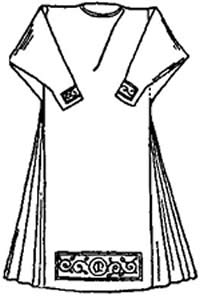
|
Cincture,
a cord tied about the waist (worn when and as needed).
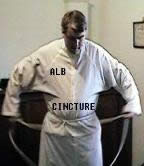
Amice, a white linen cloth placed
over the shoulders and about the neck (worn when and as needed).
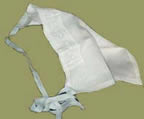
|
Stole, a long
narrow band of cloth worn over the shoulders.

|
A Deacon's
Stole is a variation of the Priest's Stole.
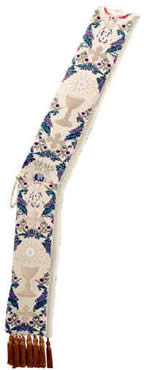
|
Chasuble,
an outer garment covering the greater part of the body.
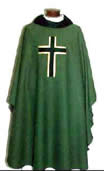
|
On significant
occasions, such as the Exposition of the Blessed Sacrament, a cope
is worn.
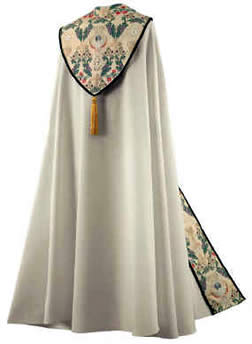
|
|
These vestments
have an ancient origin, and most of them resemble the garments worn
by the apostles.
|
| |
Some important
articles used during Mass:
The Chalice,
a gold-lined or other precious cup, in which the wine is consecrated;
The Paten, a gold-covered or other
precious plate, on which the host is placed;
The Purificator, or cloth, for wiping
the chalice;
The Pall, or linen-covered card, used
to cover the chalice;
The Corporal, or square linen cloth,
on which the host is placed;
The missal, or book, from which the
priest reads the prayers of the Mass;
The Candles;
The Crucifix over the altar;
The Linen Cloths that cover the altar.
|
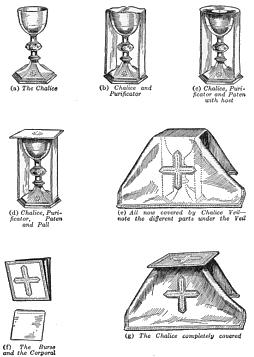 |
|
Vestment Colors:
The colors of the outer vestments worn during Mass are:
White: signifies purity of soul and holiness
Red: signifies the shedding of blood and burning love
Green: signifies hope
Violet: signifies penance
Black: signifies mourning
Rose: signifies
joy in the midst of penance
Gold: used on solemn occasions in place of white, red, or green
vestments.
White vestments are
worn on feasts of Our Lord, the Blessed Virgin, saints who were not
martyrs, and during the Easter season;
Red is used on the feasts of the Holy Ghost, the passion of
Our Lord, and martyrs;
Green is used on the Sundays outside of Advent, Lent, and the
Christmas and Easter season;
Violet is worn in Lent, Advent, and on penitential days;
Black is worn in Masses for the dead
Rose may be used instead of violet on the third Sunday of Advent
and on the fourth Sunday of Lent.
|








